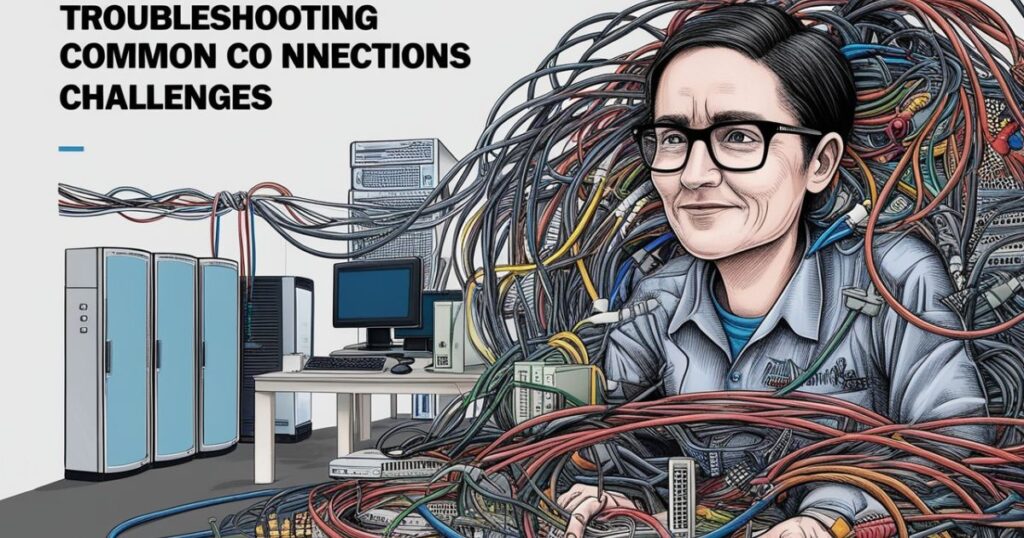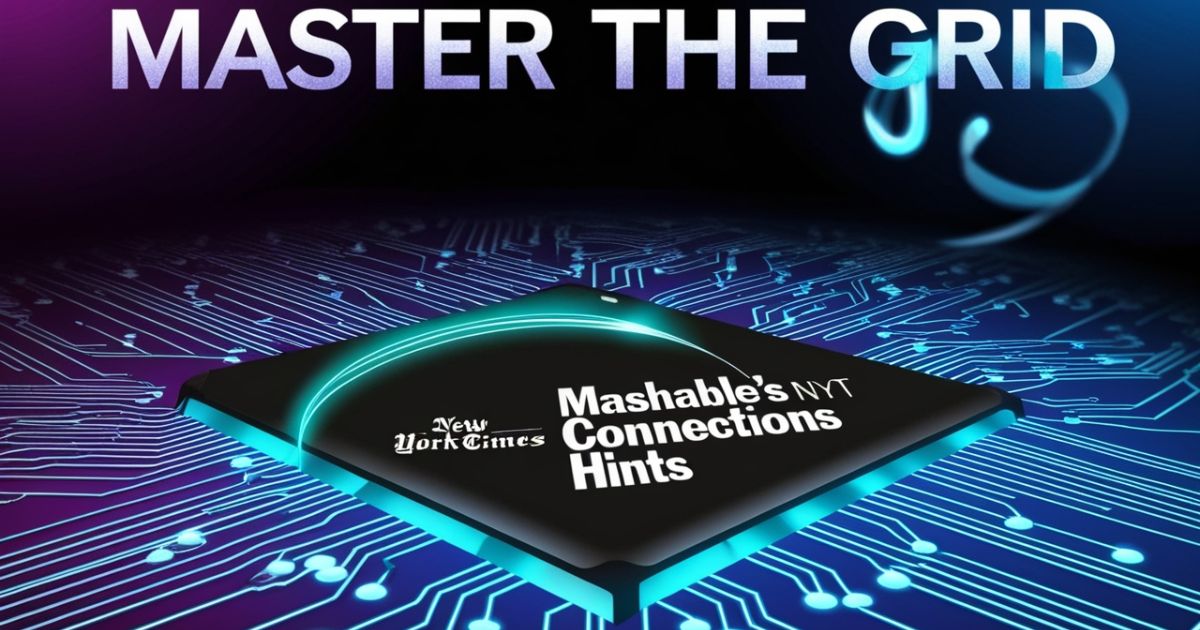NYT Connections burst onto the puzzle scene in 2023 and rapidly established itself as one of the most engaging word games in the digital landscape. Created by puzzle master Wyna Liu, this deceptively simple game has carved out a dedicated following alongside established favorites like Wordle and the NYT Crossword.
What makes NYT Connections unique is its focus on lateral thinking rather than linear problem-solving. Players must identify relationships between seemingly unrelated words, sorting 16 terms into four distinct groups of four. This fundamental challenge exercises different cognitive muscles than traditional word puzzles, demanding pattern recognition and categorical thinking.
The game’s appeal lies in its elegant simplicity paired with surprising depth. As Wyna Liu herself notes, “Connections taps into our innate desire to categorize and find patterns in the world around us.” This human tendency to classify and organize information makes the puzzle both intellectually satisfying and occasionally frustrating when patterns remain elusive.
Daily participation statistics reveal impressive engagement, with hundreds of thousands of players attempting the puzzle each day. Completion rates vary significantly based on difficulty, with some particularly challenging puzzles seeing success rates below 30%.
The puzzle’s integration into daily routines has made reliable hint resources increasingly valuable, with Mashable emerging as the premier destination for players seeking strategic assistance without complete spoilers.
Decoding the Connections Puzzle Format
Understanding the structure of NYT Connections is essential for developing effective solving strategies. The game presents 16 words arranged in a 4×4 grid, challenging players to sort them into four distinct categories containing four words each.
The color-coding system forms the backbone of the game’s structure:
| Color | Difficulty | Typical Relationship Type | Points |
| Yellow | Easiest | Obvious categories (animals, foods) | 1 point |
| Green | Medium | Related concepts or fields | 2 points |
| Blue | Challenging | Word relationships or usage patterns | 3 points |
| Purple | Most Difficult | Obscure or punny connections | 4 points |
This strategic color-coding serves multiple purposes, providing both a difficulty indicator and scoring mechanism. Players naturally gravitate toward identifying the yellow category first, but this approach isn’t always optimal, as easier categories sometimes contain words that could mislead players regarding more complex groupings.
The daily reset happens at midnight Eastern Time, with each puzzle assigned a unique number (e.g., Puzzle #143). This numbering system allows for precise reference in hint articles and community discussions.
Common pattern types that emerge across puzzles include:
- Word forms: Terms that can be paired with another word
- Thematic groupings: Items belonging to a larger category
- Linguistic tricks: Homophones, double meanings, or puns
- Cultural references: Movie titles, song lyrics, or famous quotes
The four-attempt limit creates genuine tension, as players must balance confident groupings against experimental ones. This restriction makes strategic hint usage particularly valuable for players seeking to maintain perfect solving streaks.
Mashable’s Approach to Connections Hints
Mashable’s hint system has emerged as the gold standard for NYT Connections assistance, striking a careful balance between providing genuinely helpful guidance and preserving the satisfaction of independent puzzle-solving.
The philosophy behind Mashable’s approach centers on educational progression. As Mashable’s Games Editor explains, “We aim to help players develop their puzzle-solving skills, not just give away answers.” This developmental approach distinguishes their system from competitors that simply reveal solutions.
The tiered hint structure allows readers to choose precisely how much assistance they need. This graduated approach serves various player types:
- Novices seeking fundamental guidance
- Intermediate players needing a slight nudge
- Advanced solvers stuck on a single category
- Players prioritizing streak preservation over complete independence
Mashable’s remarkable update schedule demonstrates their commitment to the Connections community. New hints typically appear within hours of each puzzle’s release, establishing a level of reliability that has built significant trust among daily players.
Compared to the New York Times’ official hint system, Mashable’s approach offers greater depth and flexibility. While the NYT typically provides only a single hint level, Mashable’s multi-tiered system accommodates diverse player needs and learning styles.
Reader testimonials consistently praise this balanced approach. One Regular Mashable Reader notes, “The comments section on Mashable’s hints has taught me more than the hints themselves.” This community aspect transforms what could be a solitary activity into a shared learning experience.
Breaking Down Mashable’s Hint Structure
Mashable’s hint system follows a carefully structured four-tier progression, allowing players to access precisely the level of assistance they need without spoiling the entire puzzle experience.
The foundation of this system is the category clue. These cleverly worded descriptions point toward the theme without revealing it completely. For example, rather than directly stating “Types of birds,” Mashable might write “These creatures might visit your backyard feeder.” This approach maintains the cognitive challenge while providing a conceptual direction.
Word pattern hints represent the second tier, offering more specific guidance about relationships between terms. These hints often highlight structural elements such as “Words that can follow ‘snow'” or “Things you might find in a kitchen.” This approach helps players recognize linguistic tricks or thematic groupings they might have overlooked.
The visual presentation enhances accessibility through thoughtful design elements:
- Bold text for category hints
- Color-coded sections matching the game’s difficulty levels
- Collapsible sections to prevent accidental spoilers
This format allows readers to gradually reveal more information as needed, particularly helpful on mobile devices where many players access hints during commutes or break times.
Unique to Mashable is their “hint map” approach, visualizing relationships between categories and identifying potential overlap points where confusion commonly occurs. This visual mapping technique proves especially valuable for spatial thinkers who process information graphically.
The strategic use of partial answers represents the third tier, revealing one or two words from each category to confirm patterns. This approach helps players overcome specific mental blocks while still requiring independent thinking to complete each grouping.
Complete solutions form the final tier, available as a last resort for players prioritizing streak preservation or those completely stuck after multiple attempts. Even at this level, Mashable structures reveals thoughtfully, explaining the logic behind each grouping rather than simply listing answers.
Real Examples of Mashable Hints in Action

Yellow Category Example (Easiest)
Puzzle #143 featured a yellow category containing APPLE, CHERRY, LEMON, and ORANGE. Mashable’s hint progression demonstrated their methodical approach to revealing information:
The initial category hint stated: “These items might be found in a produce section.” This broad clue pointed toward food items while maintaining significant ambiguity.
The word pattern hint narrowed the focus: “They all grow on trees.” This additional context eliminated vegetables and other produce that wouldn’t fit the pattern.
For players still struggling, the partial answer confirmed: “APPLE and ORANGE belong in this group.” This verification allowed players to identify the complete pattern while still requiring some independent reasoning.
This graduated approach illustrates how even for “obvious” categories, Mashable provides thoughtful guidance that respects the player’s intelligence while offering genuine assistance.
Purple Category Example (Hardest)
Puzzle #157 contained a particularly challenging purple category grouping FLIES, LIES, PIES, and TIES. Mashable’s hint progression demonstrated their approach to cryptic connections:
The initial category hint suggested: “Look closely at what these words have in common.” This intentionally vague guidance prompted players to examine spelling, pronunciation, and meaning.
The first word pattern hint directed focus: “Consider how these words are pronounced.” This narrowed attention to phonetic properties rather than definitions.
A second, more specific hint clarified: “These words all rhyme with ‘eyes’.” This precision guided players toward the sound pattern without completely revealing the answer.
The partial answer confirmed: “FLIES and TIES belong in this group.” With this verification, players could confidently identify the remaining words that matched the phonetic pattern.
This example demonstrates how Mashable handles the most challenging connections, providing increasingly specific guidance while maintaining the satisfaction of independent discovery.
Difficult Mixed Case
Puzzle #165 featured a tricky blue category containing CAST, EDITION, MOLD, and STAMP. The challenge stemmed from multiple potential interpretations for these terms.
Mashable’s initial category hint directed: “Think about creating multiple copies.” This pointed toward manufacturing processes rather than other potential meanings.
The first word pattern hint added: “These words can all function as verbs.” This grammatical clue helped eliminate certain interpretations.
A second hint clarified further: “These all relate to manufacturing processes.” This specification narrowed the conceptual field significantly.
The partial answer confirmed: “CAST and MOLD belong in this group.” With these anchor points established, players could more easily identify the complete pattern.
This example highlights Mashable’s skill in handling words with multiple meanings, carefully guiding players toward the specific definition relevant to the puzzle’s intended connection.
Advanced Techniques for Puzzle Solving
Beyond simply using Mashable’s hints, experienced NYT Connections players employ sophisticated strategies that enhance pattern recognition and solving efficiency.
Pattern recognition strategies involve identifying structural similarities:
- Word length patterns: Checking if all words in a potential group share the same number of letters
- Parts of speech analysis: Determining if all terms function as nouns, verbs, or adjectives
- Prefix/suffix evaluation: Looking for common beginnings or endings across multiple words
- Syllable counting: Noticing when words share identical syllable counts
Word association techniques can uncover less obvious connections:
- Sentence placement testing: Trying each word in the same position within a sentence
- Idiomatic expression checking: Considering whether words appear in common phrases
- Cultural context evaluation: Examining where these terms might appear together in media or daily life
Elimination methods work backward to solve puzzles:
- Identify the most confident grouping first
- Remove those words from consideration
- Look for patterns among remaining terms
- Repeat until all groups are identified
Dealing with red herrings requires particular vigilance. As one Regular NYT Connections Player observes, “The most challenging puzzles create false patterns that lead you down wrong paths.” Skilled players develop the ability to recognize and question seemingly perfect groupings, asking whether alternative arrangements might reveal more coherent patterns.
Practice exercises can strengthen these skills. One effective approach involves taking previous puzzles and identifying all possible groupings, not just the correct ones. This trains your brain to recognize multiple potential patterns and avoid fixation on initial impressions.
Visual mapping techniques also prove valuable for many players. Physically or mentally arranging words in different configurations can reveal connections that remain hidden when viewed in the original grid format.
When and How to Use Mashable’s Hints Effectively
Strategic hint usage can enhance your puzzle-solving skills over time rather than creating dependency. The key lies in approaching hints as learning tools rather than simple solutions.
The progressive hint strategy represents the most effective approach:
- Attempt the puzzle completely independently first
- If stuck after two incorrect guesses, check only category hints
- Make another attempt based on this broader guidance
- If still stuck, consult word pattern hints
- Reserve partial answers and complete solutions for final attempts
Identifying specific mental roadblocks helps determine which hint level will provide optimal assistance:
- Fixation block: When you can’t see beyond an incorrect pattern you’ve mentally established
- Vocabulary block: When words have meanings unknown to you
- Conceptual block: When the category itself falls outside your knowledge area
Learning from hint patterns improves future performance. Many serious players maintain a puzzle journal tracking:
- Which categories consistently challenge them
- Which hint types prove most beneficial
- Recurring patterns they frequently miss
- Improvement trends over time
Building solving intuition develops through mindful practice. After consulting hints, mentally replay the puzzle to identify where your thinking went astray. This reflection process progressively strengthens your pattern recognition abilities.
As one 100-day Streak Player shares, “I track every category I miss in a spreadsheet. After three months, I rarely miss the same type twice.” This systematic approach transforms hints from simple solutions into educational tools.
Many successful players adopt a “Monday method” – allowing themselves hints only on the most challenging days or for particularly difficult categories. This balanced approach builds skills while preventing frustration that might lead to abandoning the puzzle altogether.
Mashable’s Hint Community and Resources
Mashable has fostered a vibrant community ecosystem around their NYT Connections hints, creating value beyond the hints themselves.
The Mashable’s comment section under hint articles creates spaces for:
- Sharing alternative solving approaches
- Discussing particularly clever or difficult connections
- Helping fellow puzzlers without revealing full answers
- Building camaraderie around shared challenges
Social sharing features integrate with platforms like:
- Twitter (#NYTConnections)
- Reddit (r/NYTConnections)
- Facebook (NYT Connections Fans groups)
This community aspect transforms solitary puzzle-solving into a shared intellectual experience. As players exchange insights, they collectively develop a deeper understanding of pattern types and solving strategies.
Mashable’s user contribution system allows readers to:
- Suggest alternative connections
- Point out especially tricky word combinations
- Share solving times and strategies
- Request clarification on particularly complex groupings
Historical hint archives provide valuable resources for:
- New players learning the game mechanics
- Anyone looking to practice on past puzzles
- Researchers studying puzzle design patterns
- Players seeking to understand category evolution over time
Mashable has created companion resources including:
- “Connections Concepts”: A glossary of common category types
- “Pattern Library”: Collection of recurring word relationships
- “Difficulty Calendar”: Tracking puzzle difficulty trends over time
This robust ecosystem has solidified Mashable’s position as the premier Connections hint resource, supporting both casual and serious players in their puzzle-solving journeys.
Read This Post: iOS App eTrueSports: The Ultimate Sports & Esports Hub
Comparative Analysis with Other Hint Sources
While Mashable leads the field, several other sources provide NYT Connections hints. Each offers distinctive strengths and limitations worth considering.
The New York Times’ official hint system provides:
- Guaranteed accuracy (coming directly from puzzle creators)
- Minimal spoiler risk with their single-hint approach
- Seamless integration within the game interface
However, many players find this system too limited, offering insufficient guidance for genuinely challenging puzzles.
Reddit’s r/NYTConnections community provides:
- Crowdsourced hints with multiple perspectives
- Real-time help through comment threads
- Creative alternative groupings not considered by developers
- Camaraderie among dedicated puzzle enthusiasts
The downside? Quality varies widely, and spoilers remain common despite moderator efforts to contain them.
Twitter hint accounts like @ConnectionsClues offer:
- Extremely concise hints fitting Twitter’s format
- Quick publication, often beating other sources
- Interactive hint-giving through replies
- Convenient mobile access
The tradeoff is depth – these hints typically lack Mashable’s nuanced progression system.
Independent puzzle sites approach hints differently:
| Site | Hint Style | Publication Speed | Community Features |
| Puzzler’s Paradise | Mathematical approach | Medium | Strong forums |
| WordPlay Daily | Focused on wordplay | Fast | Limited engagement |
| Connections Coach | Video explanations | Slow | Tutorial-focused |
| Mashable | Tiered progressive hints | Fast | Active comments |
This comparison highlights why many players prefer Mashable’s balanced approach, combining timeliness, analytical depth, flexible hint levels, and community engagement.
Tips from Connections Masters
What separates casual players from Connections masters? Insights from consistent perfect scorers reveal their strategic approaches.
Timing strategies play a crucial role in efficient solving:
- The “two-minute rule”: If stuck for over two minutes, shift approach completely
- Category scanning: Spend 30 seconds initially just identifying potential thematic groups
- Word relationship timing: Allocate time based on word familiarity
- Strategic pausing: Step away briefly when hitting mental blocks
Category recognition shortcuts help identify patterns quickly:
- Check for words sharing the same number of syllables
- Notice terms that all begin or end with the same letter
- Identify words that fit a particular sentence structure
- Look for terms that all relate to a specific time period, region, or industry
Memory-building exercises improve long-term performance:
- Review missed connections daily to reinforce patterns
- Create personal category lists from past puzzles
- Practice creating your own Connections-style categories
- Study particularly challenging puzzles from the archive
As one 100-day Streak Player explains, “I track every category I miss in a spreadsheet. After three months, I rarely miss the same type twice.” This systematic approach transforms occasional failures into learning opportunities.
Visual mapping techniques aid spatial thinkers:
- Arrange words physically (or mentally) in different groupings
- Use color-coding in notes to track potential matches
- Draw connecting lines between words that might be related
- Create a personal mapping system for recurring category types
These experts emphasize that consistent play builds a mental library of connection types. This library becomes invaluable for solving future puzzles quickly, as the brain begins to recognize patterns almost intuitively.
Advanced players also develop specialized approaches to the challenging purple categories, often maintaining personal catalogs of pun types, homographs, and obscure reference patterns that frequently appear in these difficult groupings.
Troubleshooting Common Connections Challenges

Even with Mashable’s hints, certain puzzle elements consistently challenge players. Recognizing these common stumbling blocks can help develop targeted strategies.
Dealing with split groups and red herrings requires vigilance:
- Split group example: Words about weather distributed across multiple categories
- Red herring example: Words that rhyme but belong to different groups
- Strategy: Before committing to a grouping, check if each word might fit multiple patterns
Managing limited attempts effectively becomes critical as you approach the four-attempt limit:
- Never waste an attempt on a group you’re uncertain about
- Always verify your group contains exactly four words
- Use process of elimination on your final attempt
- When down to your last try, consider using Mashable’s partial answers
Overcoming frequent stumbling blocks requires recognizing specific challenges:
- Homograph confusion: Words with multiple meanings (like BASS)
- Category overlap: Terms that could fit multiple themes
- Cultural knowledge gaps: References outside your experience
- Linguistic tricks: Homophones, double meanings, or puns
Wyna Liu, the puzzle creator, acknowledges these challenges: “The hardest puzzles deliberately create multiple valid-seeming categories.” This intentional misdirection tests players’ ability to recognize the strongest connections among competing patterns.
When truly stuck, many experienced players recommend stepping away from the puzzle for an hour. Fresh perspective often reveals connections that were previously invisible, as the brain continues processing pattern possibilities subconsciously.
For puzzles using deliberately ambiguous words, Mashable often provides “disambiguation hints” explaining specific word contexts. These specialized clues help clarify whether a term like “BEAR” refers to the animal, the verb meaning “to carry,” or some other interpretation.
FAQ’s About Mashable’s Connections Hints
Where exactly can I find Mashable’s NYT Connections hints?
Mashable publishes daily Connections hints in their Games section, typically following the URL format: mashable.com/article/nyt-connections-hints-[puzzle-number].
Are Mashable’s hints available for free?
Yes, Mashable’s hints are completely free without subscription requirements, contributing significantly to their popularity.
How soon after a new puzzle releases does Mashable post hints?
Mashable typically publishes hints within 3-4 hours of a new puzzle’s midnight ET release, with occasional updates for especially challenging puzzles.
Does Mashable provide hints for past puzzles?
Yes, Mashable maintains a comprehensive archive of hints for all previous Connections puzzles, valuable for players working through backlog puzzles.
How does Mashable create their hints?
Mashable’s Games Editor and team solve each puzzle independently, crafting progressive hints that identify challenging aspects without complete spoilers.
Can I suggest improvements to Mashable’s hint system?
Absolutely—Mashable actively encourages feedback through their comment section, with many format improvements coming directly from reader suggestions.
Are Mashable’s hints ever incorrect?
While rare, occasional errors occur, but Mashable maintains a corrections policy and quickly updates articles when mistakes are identified.
How do Mashable’s hints compare to official NYT hints?
Mashable offers more granular hint levels than the NYT’s single-hint system, providing progressive assistance tailored to individual player needs.
Conclusion and Next Steps
Mashable’s NYT Connections hints have transformed how thousands approach this challenging puzzle. Their tiered system strikes the perfect balance between assistance and autonomy, helping players develop pattern recognition skills while preventing frustrating dead ends.
Building your own solving system starts with intentional awareness:
- Notice which categories consistently challenge you
- Identify your personal solving patterns and blind spots
- Create custom strategies based on your cognitive strengths
- Develop specialized approaches to the categories you find most difficult
Tracking progress helps measure improvement over time:
- Record solving times and attempt counts
- Note which hint levels you typically require
- Track your success with different category types
- Document patterns you frequently miss
Contributing to the hints community enriches everyone’s experience:
- Share your insights in Mashable’s comment sections
- Participate in r/NYTConnections discussions
- Create hint guides for struggling friends
- Suggest improvements to existing hint systems
What’s next for Connections and hint platforms? The puzzle continues to evolve, with increasingly creative category types appearing regularly. Mashable adapts accordingly, refining their hint approach to match new challenges as they emerge.
Remember that the ultimate goal extends beyond solving today’s puzzle. As Mashable’s Games Editor wisely notes, “The best hint is the one that triggers your own ‘aha!’ moment rather than giving away the answer.” This philosophy transforms Connections from a daily word game into a valuable cognitive exercise that strengthens pattern recognition and lateral thinking skills applicable far beyond the puzzle itself.
Hello, I’m Alex, a senior legal consultant and content editor on this website. With over a decade of experience in constitutional law and corporate litigation, I bring comprehensive legal expertise to our readers.








